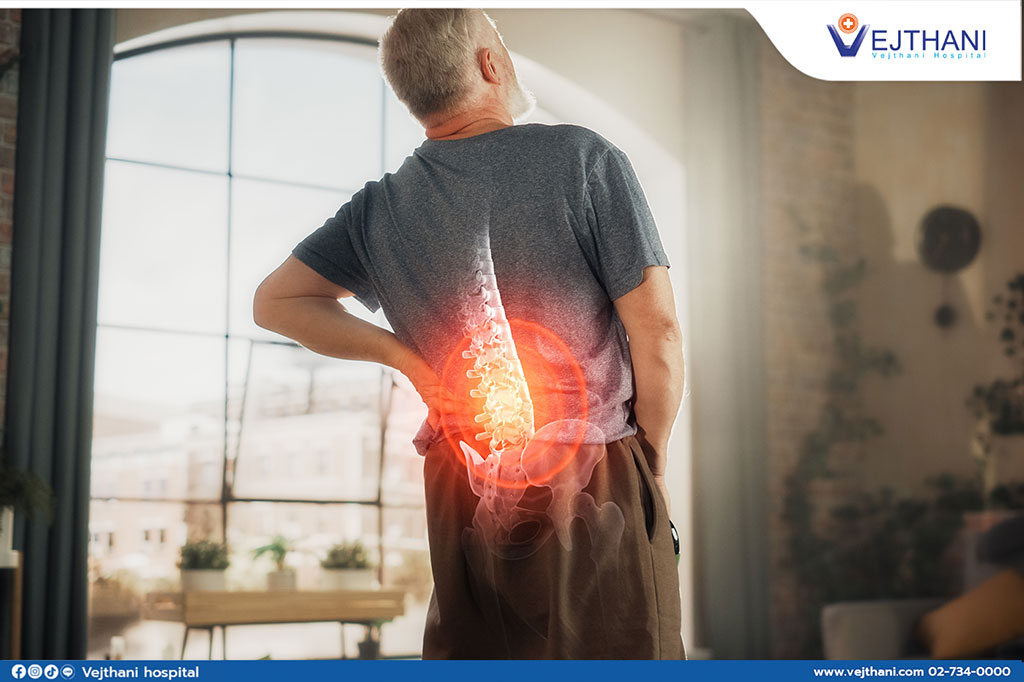
Back Pain


Overview
The most common factor preventing people from working and leading normal lives is back pain. Back pain could have a variety of causes, so it’s best to consult a healthcare provider rather than attempting to diagnose it on their own. The patient could be suffering from a simple disease like a muscle strain or there could be an underlying problem like endometriosis or kidney stones.
Back pain is classified differently by healthcare providers. The classification is usually based on the location of the pain, whether it is in the upper, middle, or lower back, and if it is on the left side, center, or right side. In addition, healthcare providers may describe the pain as mild, moderate, or severe, and the type of pain could be a large, dull ache or a smaller, more intense stabbing pain.
The duration of the back pain is also used to classify it. A quick, brief, and often injury-related episode is referred to as acute back pain. On the other hand, any back pain that lasts for more than three to six months is considered chronic or persistent. If you experience any form of back pain, it is important to seek the advice of a healthcare provider to determine the cause and appropriate treatment.
Most cases of back pain, especially in individuals under 60 years of age, can be prevented or alleviated with proper measures. In the event that prevention is unsuccessful, basic self-care techniques and correct body posture can often lead to a full recovery within a few weeks. Back pain treatment with surgery is uncommonly required.
Symptoms
Back pain might feel like a shooting, burning, or stabbing pain in the muscles. Moreover, the pain may travel down a leg. It can get worse with bending, twisting, lifting, standing, or walking.
Most back pain progressively gets better with self-care and at-home therapy. Consult a healthcare provider if the back pain lasts longer than a few weeks, is severe, and does not get better with rest; spreads down one or both legs especially if it goes below the knee, or results in weakness, numbness, or tingling in one or both legs.
If you experience back pain that is accompanied by any of the following, it may indicate a serious medical condition and require urgent medical attention:
- New bowel or bladder problems
- Fever
- Follows a fall, blow to the back, or other injury.
Causes
Back pain is often associated with various underlying factors, including medical conditions and injuries. They can also develop without a discernible cause or abnormality that can be identified through diagnostic tests or imaging studies. Some conditions that are commonly associated with back pain include:
- Muscle or ligament strain: Back muscles and spinal ligaments might get strained as a result of frequent heavy lifting or a sudden uncomfortable movement. Constant back strain might result in severe muscle spasms in those who are not in good physical shape.
- Ruptured or bulging disks: The discs between the spine’s bones serve as cushions. An internal disk’s soft substance may swell or burst, pressing a nerve in the process. Back discomfort might not always be caused by a damaged or bulging disk, though MRI, CT scans, and X-rays of the spine performed for another cause frequently reveal disk disease.
- Arthritis: The lower back may be impacted by osteoarthritis. Spinal stenosis, a disorder marked by a narrowing of the space surrounding the spinal cord, can occasionally result from arthritis in the spine.
- Osteoporosis: If the bones become brittle and thin, the spine’s vertebrae may suffer painful breakage.
- Ankylosing spondylitis: Some of the spine’s bones could merge as a result of this inflammatory condition. Spine flexibility is reduced as a result.
Risk factors
Even children and teenagers can develop back pain. These factors can increase the risk of developing back pain:
- Age: Beginning at the age of 30 or 40, back pain becomes more frequent.
- Lack of activities: Lack of exercise can cause back pain, weak back and abdominal muscles.
- Body weight: The back is under more strain when the body is overweight.
- Improper body mechanics: Back pain might result from using the back instead of the legs when lifting.
- Psychological conditions. Back pain appears to be more common among people who are prone to depression and anxiety. Back pain can be exacerbated by muscle tension brought on by stress.
- Smoking. Back pain among smokers is more common. Smoking may be the cause of this since coughing can result in herniated disks. Smoking also increases the risk of osteoporosis and reduces blood flow to the spine.
- Other diseases: Back pain can be worsened by certain cancers and forms of arthritis.
Contact Information
service@vejthani.com






















